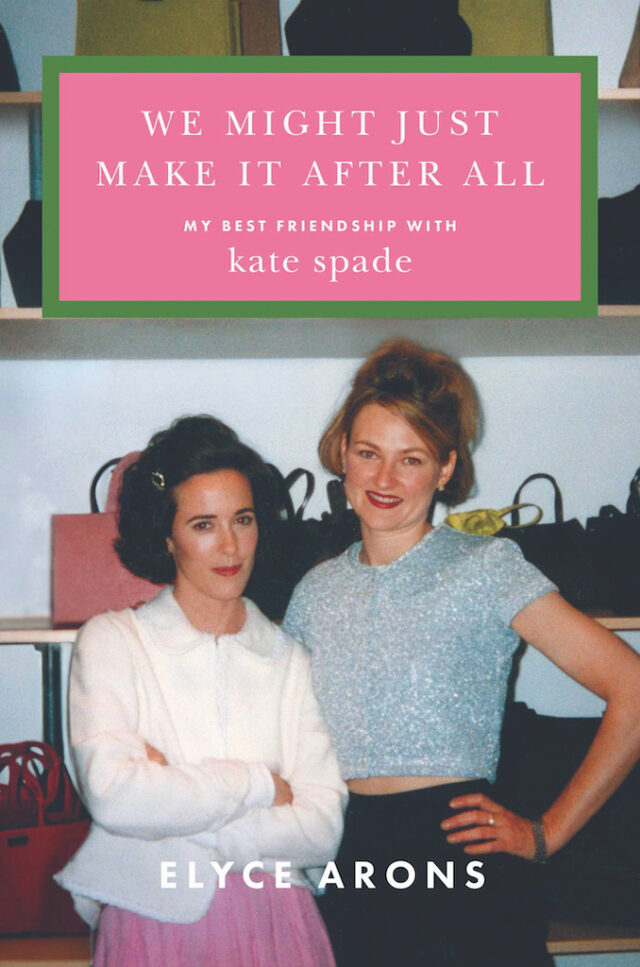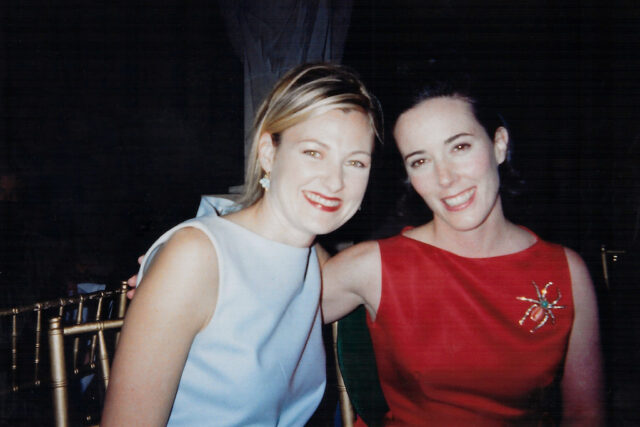
By Simon Doonan
SIMON DOONAN: I love the title We Might Just Make It After All. How did it come about?
Elyce Arons: The title is inspired by the theme song to The Mary Tyler Moore Show. We had both grown up watching Mary Richards. At a time when it was not common for single women to get a job in a predominantly male-dominated field, Mary did, and it was groundbreaking. She was a modern, confident woman who was also funny, friendly and stylish. She made our dreams seem possible. We wanted to be like Mary.
I always loved dealing with the fabulous Kate when I was creative director at Barneys New York, back in the day. Can you describe her for those who never met her?
Katy had a graciousness about her that made everyone feel seen. She was always genuinely interested in the person in front of her—whether it was a fashion editor or a friend’s child. She wasn’t flashy; her magic was in her clever wit, her Midwestern warmth and her impeccable eye.
Explain the massive impact of Kate Spade bags when they first launched—why did they strike such a chord?
At the time, fashion felt either too precious or too practical—there wasn’t much in between. Kate Spade bags hit this perfect sweet spot: clean, smart, colorful and fun, but still refined. They offered women polish without taking themselves too seriously. The label on the outside happened pretty much at the last minute. Katy felt like people needed somewhere for the eye to go on such a simple construction. That little label signaled something new: a brand that was approachable, feminine and clever.

You and Kate didn’t set out to launch a brand together. You kept your day job for some time before things took off. When did you realize there was such explosive potential?
Katy and her husband, Andy, had already come up with the idea for the handbag business and were getting things off the ground when I came on board. Besides wanting to work with my best friends, the moment I saw the first samples, I knew it was something special—smart, fresh and totally different from anything else out there. Pamela [Bell, another partner in the Kate Spade brand] was able to be physically present from the start because she had the flexibility to do so. I was equally committed, but I had to keep my day job a bit longer since I couldn’t afford to go without a salary. We all found our own ways to make it work in those early days—scrappy, determined and completely invested in what we were building together.
What do you miss about the ’90s in NYC?
Being young! There was this incredible sense of possibility in the air. New York in the ’90s was still gritty, but it was full of creative energy. We were part of this downtown scene where everyone was starting something—designers, chefs, musicians, writers. There wasn’t as much polish or pressure. People were willing to take risks, and it felt like anything could happen.
After the successful sale of the company, you and Kate launched Frances Valentine. What made you want to get back in the game?
We missed it—not just the creative part, but the joy of building something together and the social fabric of being in the office. Frances Valentine was our way of getting back to what we loved: creating beautiful things for women who appreciate individual style, great color, fun details and craftsmanship with a lot of heart. It wasn’t about chasing trends or scaling fast; it was about staying true to our aesthetic and values.
What do you feel is Kate’s legacy?
Katy’s legacy is bigger than fashion. She helped women express themselves in a new way—through style that didn’t require compromise. But even more than that, her legacy is one of kindness, creativity and authenticity. She made people feel like they belonged, and that’s something that transcends trends. She was full of joy and genuine goodness, and that spirit lives on in Frances Valentine, in our memories and in the millions of lives she touched.





